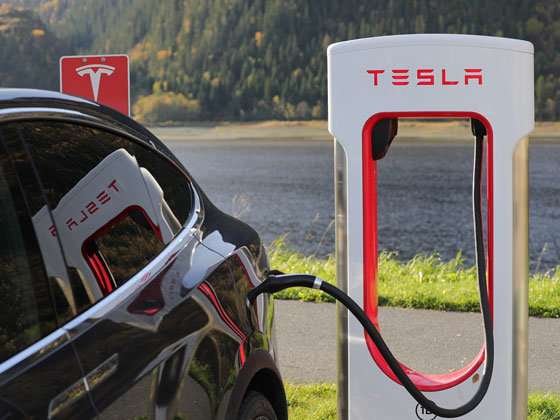Electric vehicles could save billions on energy storage

Using electric vehicles (EVs) as mobile power storage could eliminate the need to build costly stationary grid storage for energy from renewable sources.
That is the key finding of a new study by the Lawrence Berkeley National Laboratory (Berkeley Lab) in California, published this month in Environmental Research Letters.
Using California as a case study, the researchers looked at the issue of large-scale deployment of renewables across the energy grid, the associated problems of variability (daytime overproduction, or evening surge demand), and how controlled charging of mandated EVs could help to mitigate these problems.
Lead author Jonathan Coignard, from Berkeley Lab, said: "California has ambitious targets to decarbonize transportation, mandating the introduction of 1.5 million zero-emission vehicles (or ZEVs) by 2025, most of which will be EVs. It also has a renewable energy policy requiring 33 per cent of grid energy to come from renewables by 2020, and 50 per cent by 2030."
Co-author Dr. Jeffery Greenblatt, now at Emerging Futures LLC, said: "A substantial opportunity exists if EVs from the ZEV Mandate are used to provide grid storage to support renewables integration.
"By removing the need to build new stationary grid storage, EVs can provide a dual benefit of decarbonizing transportation while lowering the capital costs for widespread renewables integration. These benefits are not limited to California, but are applicable worldwide whenever EVs and renewables generation become widespread."
Using net grid load forecasts from the California Independent System Operator (CAISO), the research team quantified how increasing numbers of EVs would affect the evolving grid load in three scenarios: 1) if EVs were charged in an uncontrolled manner, 2) if vehicles were grid-integrated with controllable charging only (one-way power flow, or V1G), and 3) if vehicles were grid-integrated with controllable charging and discharging rates (two-way power flow, or V2G) for the worst day of each forecast year.
Their results showed that California's storage mandate could largely be met through the ZEV mandate with only V1G-capable vehicles. The finding is significant, as V1G is readily available today with little added cost compared with uncontrolled charging.
Co-author Dr. Samveg Saxena, also at Berkeley Lab, said: "Even more significantly, we found that several billion dollars of capital investment could be saved if EVs are used in lieu of stationary storage. Those savings could be redirected to further accelerate the deployment of clean vehicles and vehicle-grid integration, and could even be used to pay EV owners when their vehicles are grid-connected with controlled charging."
More information: Jonathan Coignard et al. Clean vehicles as an enabler for a clean electricity grid, Environmental Research Letters (2018). DOI: 10.1088/1748-9326/aabe97
Journal information: Environmental Research Letters
Provided by Institute of Physics




















